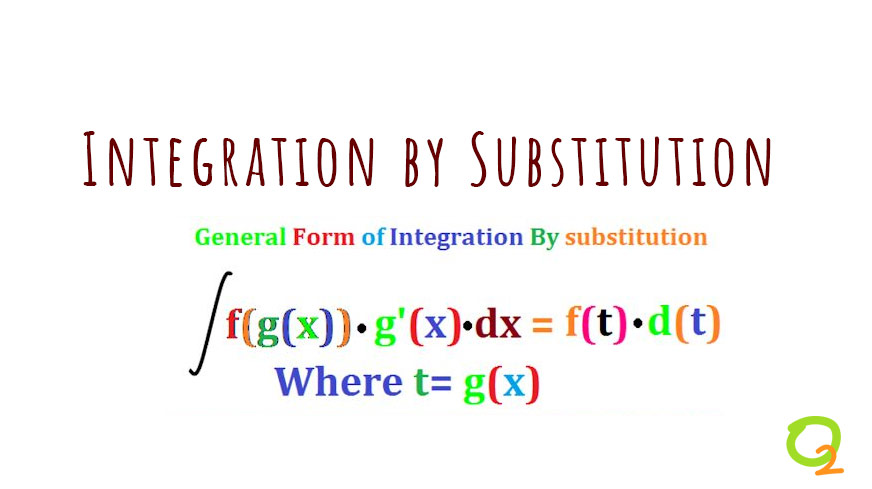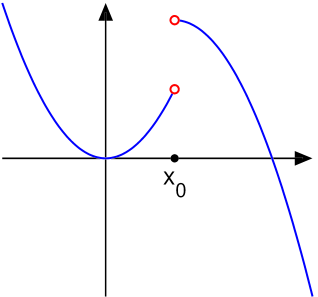Integration by Substitution
“Integration by Substitution” (also called “u-Substitution” or “The Reverse Chain Rule”) is a method to find an integral, but only when it can be set up in a special way.
The first and most vital step is to be able to write our integral in this form:

Note that we have $g(x)$ and its derivative $g'(x)$
Like in this example:

Here $f=cos$, and we have $g=x^2$ and its derivative $2x$.
This integral is good to go!
When our integral is set up like that, we can do this substitution:

Then we can integrate $f(u)$, and finish by putting $g(x)$ back as $u$.
Substitution Rule

Example Integration by Substitution
Example 1. Find the integral $$\int \cos(x^2) 2x dx$$
We know (from above) that it is in the right form to do the substitution:

Now integrate: $$\int \cos(u) du = \sin(u) + C$$ And finally put $u=x^2$ back again: $$\sin(x^2) + C$$ So $\displaystyle \int\cos(x^2) 2x dx = \sin(x^2) + C.$$
That worked out really nicely! (Well, I knew it would.)
But this method only works on some integrals of course, and it may need rearranging:
Example 2. Find the integral $$\int \cos(x^2) 6x dx$$Oh no! It is $6x$, not $2x$ like before. Our perfect setup is gone.
Never fear! Just rearrange the integral like this: $$\int\cos(x^2) 6x dx = 3\int\cos(x^2) 2x dx$$
(We can pull constant multipliers outside the integration, see Rules of Integration.)
Then go ahead as before: $$3\int\cos(u) du = 3 \sin(u) + C$$
Now put $u=x^2$ back again: $$3 sin(x^2) + C$$
Done!
Now let’s try a slightly harder example:
Example 3. Find the integral $$\int \frac{x}{x^2+1} dx$$Let me see … the derivative of x^2 +1 is 2x … so how about we rearrange it like this: $$\int \frac{x}{x^2 +1} dx = \frac{1}{2}\int \frac{2x}{x^2 +1} dx$$ Then we have:

Then integrate:$$\frac{1}{2} \int \frac{1}{u} du = \frac{1}{2} \ln(u) + C$$
Now put $u=x^2 +1$ back again: $$\frac{1}{2}\ln(x^2 +1) + C$$
And how about this one:
Example 4. Find the integral $$\int (x+1)^3 dx$$
Let me see … the derivative of $x+1$ is … well it is simply 1.
So we can have this:$$\int (x+1)^3 dx = \int (x+1)^3 \cdot 1 dx$$ Then we have:

Then integrate:$$\int u^3 du = \frac{1}{4}\cdot u^4 + C$$
Now put $u=x+1$ back again:$$ \frac{(x+1)^4}{4} + C$$
We can take that idea further like this:
Example 5. Find the integral $$\int (5x+2)^7 dx$$
If it was in THIS form we could do it:$$\int (5x+2)^7\cdot 5dx$$
So let’s make it so by doing this: $$\frac{1}{5} \int (5x+2)^7\cdot 5dx$$ The $\frac{1}{5}$ and 5 cancel out so all is fine.
And now we can have $u=5x+2$
And then integrate: $$\frac{1}{5} \int u^7 du = \frac{1}{5} \cdot \frac{1}{8} u^8 +C$$ Now put $u=5x+2$ back again, and simplify: $$\frac{(5x+2)^8}{40} + C$$
Now get some practice, OK?
In Summary
- When we can put an integral in this form:

- Then we can make $u=g(x)$ and integrate $\displaystyle \int f(u) du$
- And finish up by re-inserting $g(x)$ where $u$ is $g(x)$.
(https://www.mathsisfun.com/calculus/integration-by-substitution.html)





